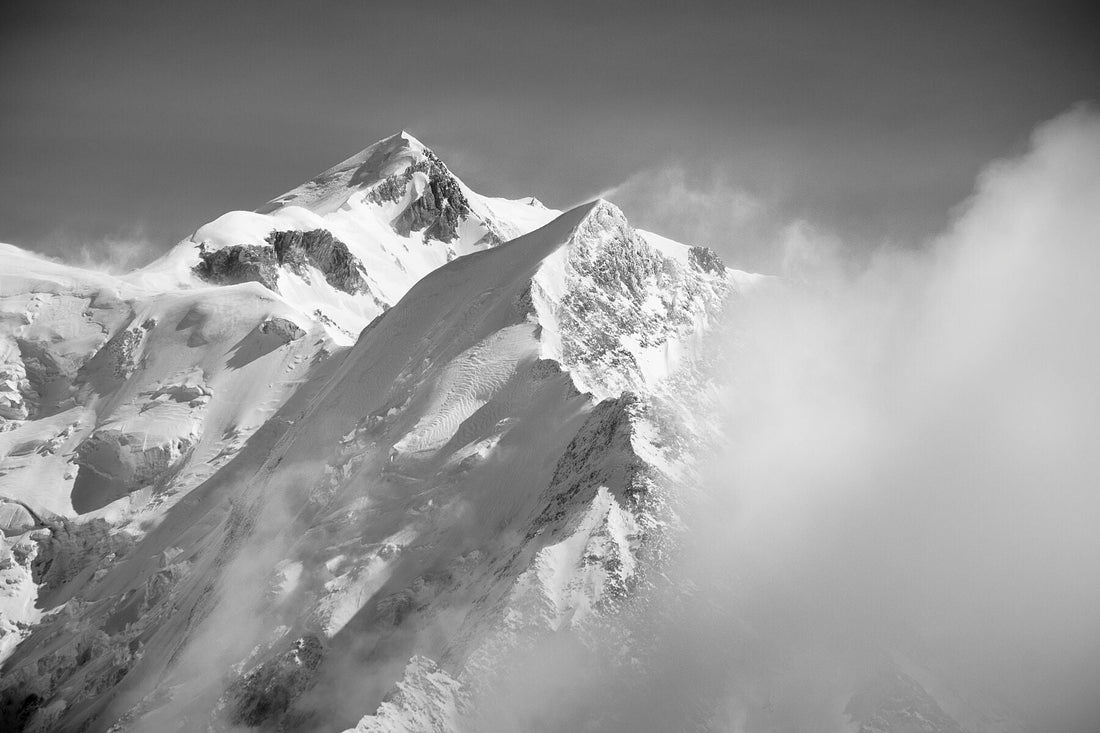
Mont Blanc: An Icon of Natural Beauty and Artistic Inspiration
Share
It is impossible not to visit the Alps and be transfixed by Mont Blanc. Rising to an impressive height of 4,809 meters (15,777 feet), Mont Blanc is the highest peak in Western Europe and a symbol of awe-inspiring natural grandeur, dominating the village of Chamonix and and visible for afar. Known as the "Roof of Europe," it has long captivated explorers, scientists, and artists alike. From early Romantic painters to modern photographers, Mont Blanc has served as a source of artistic inspiration, shaping cultural perceptions of nature and the sublime.
Mont Blanc in Romantic and Classical Art
During the 18th and 19th centuries, Mont Blanc became a key subject in Romanticism, an artistic movement that emphasized the beauty and power of nature. Painters such as J.M.W. Turner and Albert Bierstadt created breathtaking landscapes that depicted the mountain as a place of grandeur and mystery. Their works often featured dramatic lighting, swirling clouds, and rugged terrain, emphasizing the sublime—a concept that evokes both awe and fear.
One notable work pictured below is J.M.W. Turner's "Mont Blanc from Fort Roch (1802), which captures the mountain bathed in golden light, illustrating its majestic yet untamed nature.

Similarly, John Ruskin, an artist and critic, produced detailed sketches and watercolours of Mont Blanc, highlighting its intricate ice formations and shifting atmospheric effects.
 The Aiguilles of Chamonix from below Les Houches, 1842
The Aiguilles of Chamonix from below Les Houches, 1842
Mont Blanc in Literature and Poetry
Mont Blanc has also been a central theme in literature. In 1816, the English poet Percy Bysshe Shelley wrote his famous poem Mont Blanc: Lines Written in the Vale of Chamouni, which reflects on the mountain's eternal presence and its role as a metaphor for the power of nature. His words capture both the mountain's immensity and its philosophical significance:
"Thou hast a voice, great Mountain, to repeal / Large codes of fraud and woe; not understood / By all, but which the wise, and great, and good / Interpret, or make felt, or deeply feel."
Mont Blanc in Photography and Modern Art
With the advent of photography, Mont Blanc became one of the most photographed peaks in the world. In the 19th century, early alpine photographers such as the Bisson brothers and Vittorio Sella captured striking black-and-white images that documented the mountain's glaciers, climbers, and rugged beauty.
In the 20th and 21st centuries, Mont Blanc continued to inspire artists in new ways. Abstract and impressionist painters have reinterpreted its form, while modern digital artists and filmmakers have incorporated it into various media. The mountain has also been a backdrop in cinematic works, reinforcing its place in the global imagination as a symbol of adventure and endurance.

Bisson Frères (Louis-Auguste Bisson [France, 1814-1876] & Auguste-Rosalie Bisson [France, 1826-1900]): Glacier des Bossons, Savoie
Bisson Frères (Louis-Auguste Bisson [France, 1814-1876] & Auguste-Rosalie Bisson [France, 1826-1900]): Glacier des Bossons, Savoie
Mont Blanc's imposing presence and ever-changing appearance have made it a constant muse for artists across centuries. Whether depicted in Romantic paintings, poetic verses, early photography, or contemporary digital art, the mountain remains a timeless emblem of nature’s magnificence. As climate change threatens its glaciers and landscapes, these artistic representations gain even greater importance, preserving Mont Blanc’s legacy for future generations.
